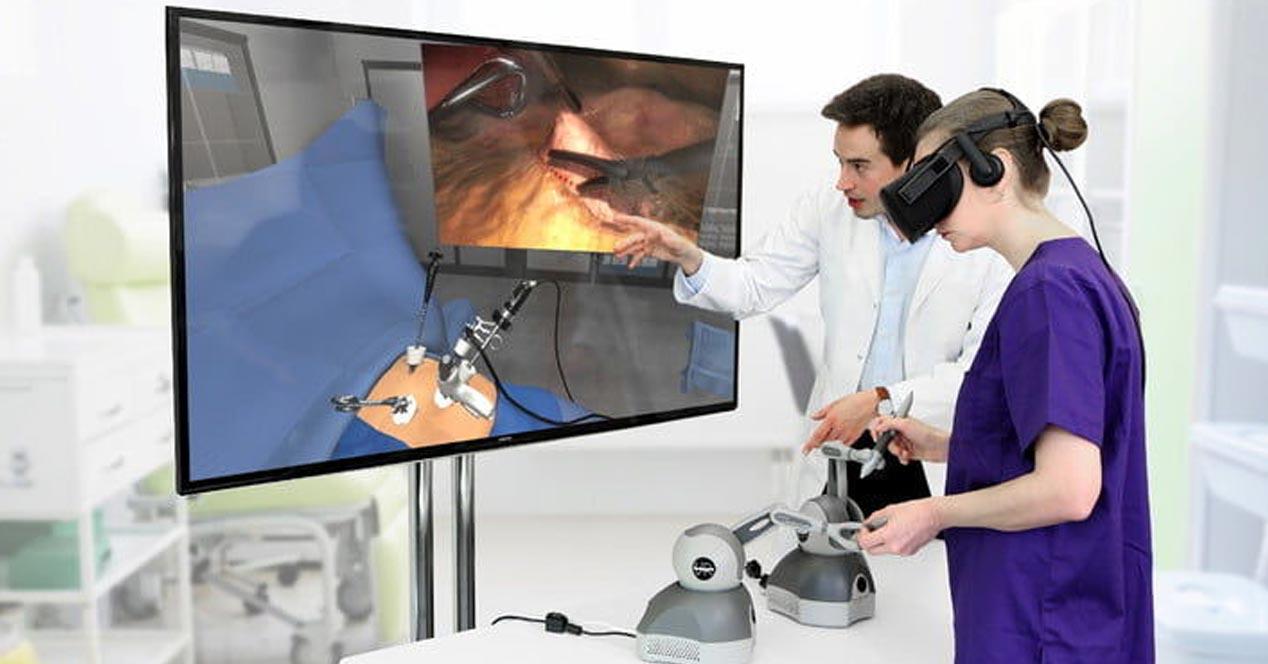Uses of virtual reality in medicine

Virtual reality is the creation of an environment produced by a computer system that gives us the feeling that we are in reality and allows us to go to any place where we feel we are in that environment in a very similar way to reality. It allows us to live completely realistic experiences through games, travel the world or even feel like we can fly without leaving the sofa in our home.
How is VR applied in medicine?
In addition to its applications in the entertainment field, Virtual reality is very useful in the field of medicine. The applications of virtual reality in medicine are many and varied, but it mainly focuses on these uses:
surgeries
The main application in the case of surgeries is remote interventions Where the doctor does not work directly, but does so through a robot that performs the different steps of the process. The surgeon in question may be away from the robot or even in another hospital. Due to the great accuracy that these robots provide, they are very useful in microsurgical operations, and there is even talk of the possibility of conducting Operations in the absence of specialists.
Through virtual reality simulators, doctors are also significantly improving their skill and performance in operating rooms, which is great news, as they can access through 3D representation of a patient’s anatomy. Planning and rehearsing Previous surgery to overcome potential complications during the “real” intervention.

Treatment of phobias and trauma
The use of virtual reality to treat phobias or trauma is also a frequent use in the field of psychology. Phobias are psychological disorders or irrational fears that some people feel when they encounter certain situations or items. Through virtual reality the patient can are detected sequentially In situations that generate panic (claustrophobia, fear of flying, arachnophobia) and Lower thresholds for anxiety That these fears managed to produce it.
On the other hand, psychologists also use virtual reality as a therapy so that their patients can overcome some trauma that arises in childhood or situations that have occurred that have traumatized the person.
Treatment against Alzheimer’s disease or autism
At the moment, Alzheimer’s disease is a disease that has no cure, but there are virtual reality technologies that can help patients recover Cognitive abilities By reproducing past photos. Lack of focus or a feeling of apathy is a consequence of Alzheimer’s disease in people who suffer from it, and through this regimen, the patient’s concentration and attitude can be enhanced.
Developed by researchers from the University of Valencia Savia Project To help children with autism. Children must complete a goal in a virtual environment and then try to beat it in a real environment.
Using virtual reality, people with autism can learn to handle everyday situations such as having a conversation or crossing a street from side to side. These situations present a challenge for people with autism.
academic training
There are simulators that allow medical students and graduates to develop technical skills and abilities as if they were in a real-world situation. Through this simulation, future medical professionals can practice catheterization, surgery, endoscopy, or give Anatomy lessons Without the need for the presence of corpses or animals to carry out its practices.
Medical students will be able to practice continuously at no additional cost and will not need to do exercises to begin learning about the human body in the most realistic way.

“Award-winning zombie scholar. Music practitioner. Food expert. Troublemaker.”


/cloudfront-eu-central-1.images.arcpublishing.com/prisa/AHVYMMDSTZDTDBFNZ3LMFUOKNE.jpg)








